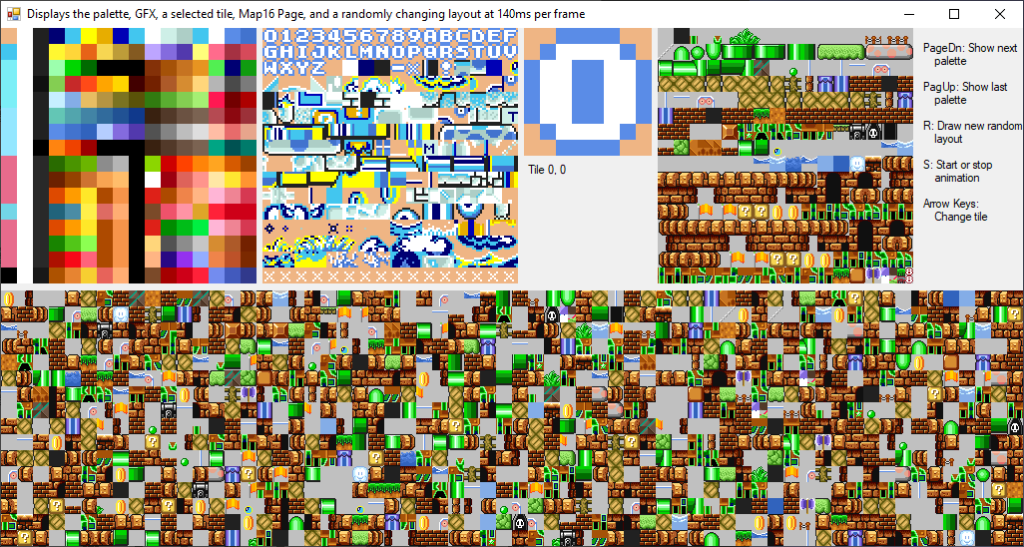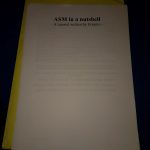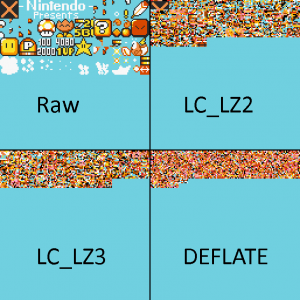Few people from a rather niche ROM hacking scene probably noticed one of my biggest projects on GitHub suddenly ended up as a 404 sometime ago. Namely, the Super Mario All-Stars (“SMAS”) disassembly. I made the repository private for a few reasons, which I’ll mention later. Earlier I talked with spel werdz rite (SWR) and we agreed that I transfer the ownership of the entire project and the repository to him. The short version of this post is that the repository can now be found at https://github.com/Maseya/SMAS-Disassembly. It’s not my responsibility anymore.
How it all started
The disassembly started out as a side project besides my usual SMW hacking activities back in the days. I figured it would be really awesome to hack my childhood favorite game(s). Seeing that nobody on SMWCentral was really doing anything with SMAS, I attempted making a level editor inspired by Lunar Magic. I had only a few weeks of C# experience back then, so of course, that project quickly got nowhere.
I did say “nobody on SMWCentral”, but it’s worth mentioning that there were some documents floating around on the internet, written by Insectduel. These documents were related to level and overworld data for Super Mario Bros. 1 and Super Mario Bros. 3. He credited spel werdz rite multiple times for finding that information.
A while after that failed project, I came up with the idea of starting a disassembly, inspired by SMW’s “all.log”. At some point it dawned on me that disassemblies can’t be missed for ROM hacking. After all, thanks to all.log, we kept discovering new, previously undocumented RAM addresses. The same could be accomplished for SMAS.
Disassembling the ROM
After recruiting a few SMWC members for this project – Alcaro, Roy, imamelia – the project got started. Alcaro mainly made us an essential tool. It would format the debugger output of the SNES9X debugger to the well-known all.log format. Because, indeed, we used the SNES9X debugger to disassemble the ROM. We would use the disassemble function, copy paste the output into this tool, then manually sift through the code to see if there was anything strange (e.g. tables disassembled as instructions).
To my knowledge, there were no good SNES disassemblers back then. The only way I knew how to disassemble ROMs then was by using the “disassemble” function of the SNES9x debugger. The output was very consistent but also very prone to errors. It wasn’t smart and couldn’t distinguish code from tables, nor be able to infer if A, X or Y were 16-bit or 8-bit status. I do want to make a “smart” disassembler one day. It’s definitely on my todo list!
Results
I don’t remember how long it took. I think it took us about 1 year to finally finish the disassembly and get to the more exciting part: documenting stuff. For this, I made a dedicated website at https://smas.ersan.io/. Side-note: the layout is made by Counterfeit and I still think it’s absolutely gorgeous to this day. Nowadays, I keep the website archived. I don’t add new addresses anymore, as the maps are now hosted over at SMWCentral. Thanks to the newfound info, this was definitely possible:
Meanwhile, SWR, started a new project called “MushROMs” which initially started out as a SMAS editor, but continually grew into a set of general-purpose SNES ROM hacking libraries. It’s been a while since the last update, but it would be cool to see this finished as well.


Stagnation
Eventually, the SMAS disassembly slowly came to a halt. The documenting just didn’t happen anymore, and for me, the project consumed a lot of valuable time. Time I needed at the university at that time. Also, despite people expressing their interest in this project being finished, it was really just me, imamelia, Roy and eventually SWR working on the project. Speaking for myself only, it wasn’t very motivating to see people being interested, yet nobody really contributing to see their interest actually being completed. Even after putting it on GitHub, I think over the course of 4 years, only two people actually contributed something new to the code.
Fast forward to today. Aside from a bit of formatting and the composition of the repository, no new progress has been made in documenting. There are about 600 RAM addresses on SMWCentral still waiting in moderation for a few years straight now. I feel bad about it, but I truly don’t have the time nor motivation to moderate those addresses anymore (and I should probably just relinquish my position as a “SMAS ASM moderator” on SMWCentral). I have a full-time job now. I have my own ambitions as a software engineer, and I simply can’t afford to work on this project anymore. As people say, “time is money” and I’d rather spend my time learning new skills to build my career, rather than work on a project I’m not interested in and has very little merit for me to finish it. My circumstances have changed I suppose. As a result, I went from “it would be cool to see ROM hacks of SMAS!” to “time is money, so it’s time to move on”.
Finally, the recent “giga leak” of various Nintendo source codes gave me a bit of a moral dilemma. This is a big topic in itself, but to keep it short, I just didn’t want such a questionable project in my repository anymore. I was basically hosting source code that didn’t belong to me, in my GitHub repository. The fact that the giga leak contained source code of SMAS just reinforced this thought, thus I distanced myself from that repository.
Conclusion
As I mentioned at the start of this post, I handed over the repository to SWR. He gladly accepted the responsibility, thus I can finally conclude this project. Even though we made good progress, for me personally, it’s just too much to handle at this point of life. My ambition just sort of got killed by various factors as time passed by. However, I think it would be cool to see the project and a fully-functional MushROMs finished one day, just because of the immense effort various people put in them. It would be interesting to finally see some big results come into fruition.







